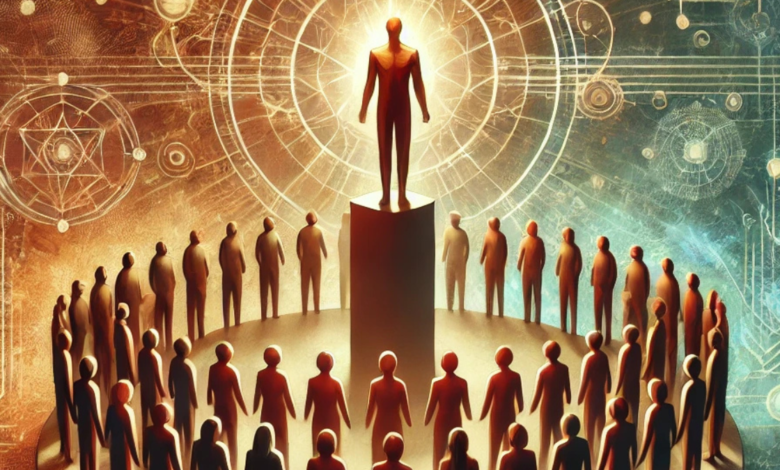The Magnetic Pull of Human Gathering Cult: Understanding Their Allure and Impact

Introduction: The Enigma of Human Gathering Cult
Human gathering cult have long fascinated and puzzled societies, weaving into the fabric of history and culture. These are communities built around charismatic leaders, shared ideologies, or deeply rooted rituals that bind members into a collective existence human gathering cult. Unlike conventional communities, gathering cults often exhibit a unique blend of exclusivity and intensity, creating a sense of belonging that is difficult to replicate elsewhere.
The allure of these cults often stems from the human desire for connection and purpose. People gravitate toward groups that promise meaning, security, and identity in an increasingly fragmented and isolated world. Whether driven by spiritual quests, ideological pursuits, or social connections, the pull of these groups can be powerful. Understanding why individuals are drawn to such communities is essential to deciphering their societal impact.
Studying human gathering cult is crucial for multiple reasons. They highlight the delicate balance between community and individuality, offering lessons on human psychology, social structures, and the potential dangers of uncritical groupthink. Moreover, as technology amplifies their reach, the relevance of examining these cults has never been greater.
The Anatomy of Human Gathering Cult
Core Features of Gathering Cults
At their core, gathering cults share several distinct characteristics. A charismatic leader often serves as the group’s linchpin, wielding influence through charm, persuasion, or a perceived connection to higher powers. Spiritual, ideological, or lifestyle-driven rituals help solidify the group’s identity and instil a sense of unity among members. Hierarchical structures further reinforce exclusivity, with clear distinctions between insiders and outsiders.
Types of Gathering Cults
Gathering cults come in various forms, catering to diverse human needs and interests. Religious and spiritual cults, for example, promise enlightenment or salvation through esoteric practices. Political and ideological cults appeal to those seeking societal transformation, often through radical means. Social or lifestyle-based cults, meanwhile, focus on shared interests such as health, self-improvement, or even art.
Methods of Recruitment
Recruitment into these groups often begins subtly. Emotional appeals—such as promises of acceptance or personal growth—draw individuals in. In today’s digital age, social media and online forums amplify their reach, allowing cults to target individuals with precision. Once recruited, indoctrination practices—from repetitive messaging to controlled environments—solidify members’ loyalty.
The Psychological and Social Impact of Gathering Cults
Psychological Effects on Members
Membership in a gathering cult often has profound psychological effects. Many individuals report an initial sense of euphoria—a feeling of belonging and purpose that fills emotional voids. Over time, however, this dependency can evolve into an unhealthy attachment. Members may lose their sense of individuality, making it difficult to challenge the group’s norms or leadership. For those who leave, the transition back to regular life can be fraught with guilt, confusion, and even psychological trauma.
Societal Implications
The societal impact of gathering cults is mixed. Some cults foster positive outcomes, such as community support, charitable activities, or innovative ideas. On the other hand, exploitative or extremist cults can isolate members from society, perpetuate harmful ideologies, and even lead to large-scale tragedies. Understanding these dynamics is essential for evaluating their broader implications.
Case Studies of Prominent Gathering Cults
Examining historical examples helps shed light on the workings of such groups. Cults like the People’s Temple and Heaven’s Gate highlight the potential for manipulation and devastation when unchecked authority meets blind allegiance. Conversely, less harmful groups, such as specific wellness-focused communities, demonstrate how shared purpose can foster solidarity and growth.
How to Identify and Navigate the Influence of Gathering Cults

Warning Signs of a Gathering Cult
Recognizing a gathering cult often involves identifying key warning signs. These include an obsessive focus on a leader, demands for unquestioning loyalty, and using isolation to control members. High-pressure recruitment tactics and a lack of transparency regarding group activities are additional red flags.
Protecting Vulnerable Individuals
Preventing individuals from falling prey to cults begins with fostering critical thinking and emotional resilience. Education plays a pivotal role in helping people recognize manipulative tactics. Families and communities must also provide strong support systems to counteract the allure of such groups.
Intervention Strategies
Intervening in the lives of cult members requires delicacy and expertise. Governments and non-profits can help by offering resources, such as counselling and reintegration programs, for those leaving cults. Public awareness campaigns can also demystify cult tactics, empowering individuals to make informed choices.
Conclusion: Decoding the Human Need to Belong
Human gathering cult illuminate the universal human need for connection, purpose, and identity. While these groups can offer solace and community, they also underscore the dangers of uncritical conformity and unchecked authority. Studying their allure and impact can provide valuable insights into human psychology and social dynamics.
As we navigate an increasingly connected yet isolated world, fostering awareness and critical thinking remains essential. Encouraging informed choices and promoting healthy community-building practices can ensure that the human need to belong is met in empowering and constructive ways.
FAQs: Answering Common Questions About Human Gathering Cult
- What distinguishes a gathering cult from a regular community?
- Gathering cults are marked by exclusivity, intense loyalty to a leader, and practices that often isolate members from outsiders, unlike regular communities that emphasize inclusivity and mutual support.
- Why do people find it challenging to leave cults?
- Psychological manipulation, emotional dependency, and fear of ostracism make it challenging for members to exit cults.
- Are all gathering cults harmful?
- Not all cults are harmful; some provide community and purpose without exploiting members. However, many exhibit controlling and manipulative behaviours.
- What role does the internet play in modern cult recruitment?
- The internet amplifies cults’ reach, enabling them to target vulnerable individuals through social media, forums, and tailored advertisements.
- How can someone help a loved one who might be in a cult?
- Approach with empathy and avoid confrontation. Encourage open conversations and seek professional guidance if needed.
You May Also Read: https://ventsbuz.com/lakewood-scoop/




